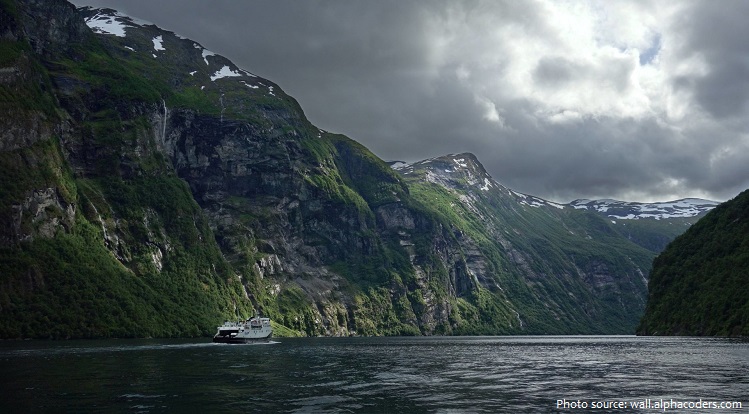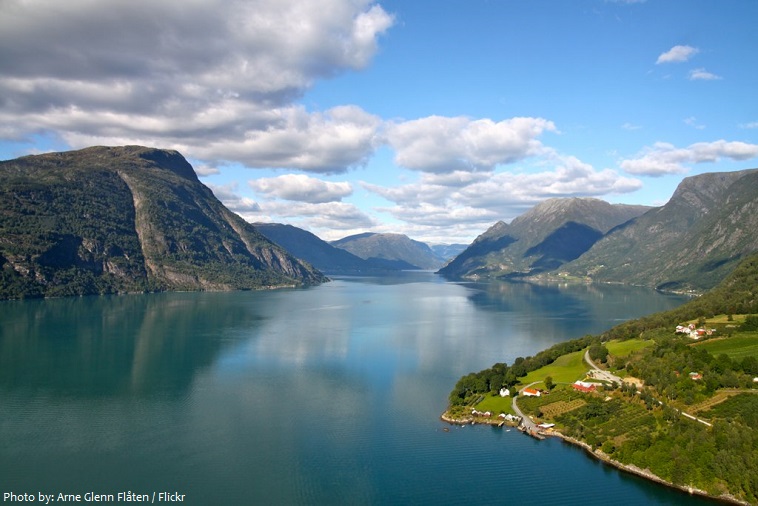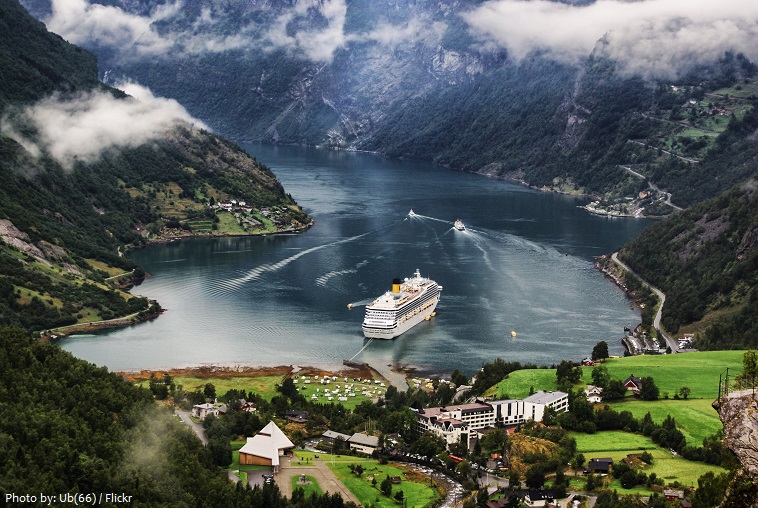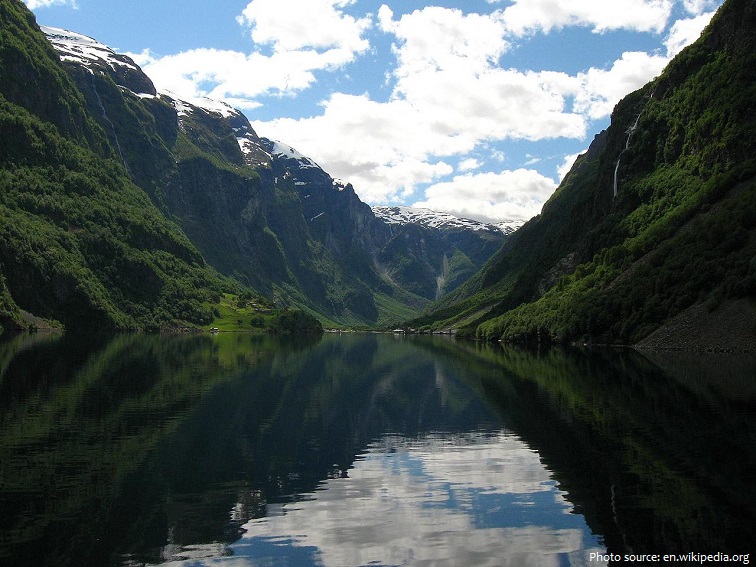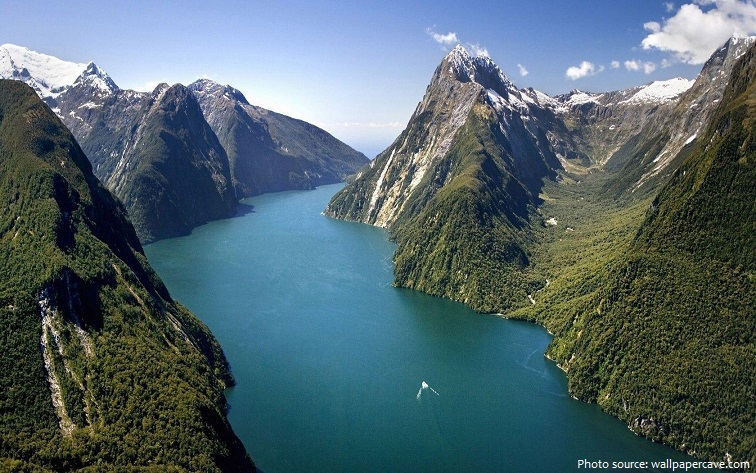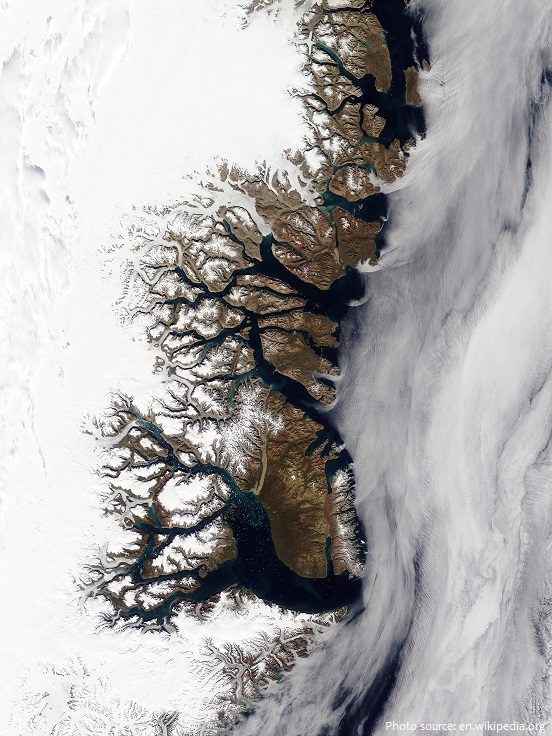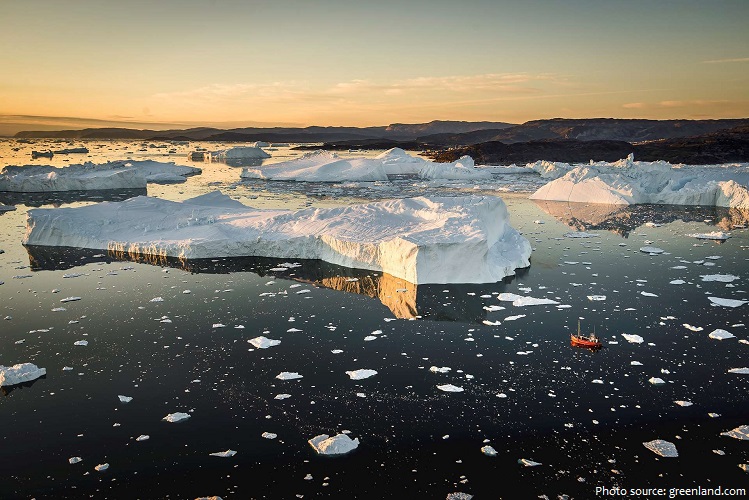Geologically, a fjord or fiord is a long, narrow inlet with steep sides or cliffs, created by a glacier.
The fjords were formed by glaciers that through several ice ages have shaped the landscape.
It is assumed that the enormous, thick glaciers that formed in these valleys were so heavy that they could erode the bottom of the valley far below sea level before they floated in the ocean water.
If the geological formation is wider than it is long, it is not a fjord. Then it is a bay or cove.
Fjords are found mainly in Norway, Chile, New Zealand, Canada, Greenland, and the U.S. state of Alaska.
Norway’s coastline is estimated at 29,000 kilometres (18,000 mi) with nearly 1,200 fjords, but only 2,500 kilometres (1,600 mi) when fjords are excluded.
Many fjords are astonishingly deep – Sogn Fjord in Norway is 1,308 meters (4,290 feet) deep, and Canal Messier in Chile is 1,270 meters (4,167 feet).
Sognefjord is the largest and deepest fjord in Norway. It is nicknamed the King of the Fjords. Sognefjord reaches 204 kilometers (127 miles) inland and branches off into smaller inlets and fjords along the way. At its widest, it is almost 6 kilometers (3.7 miles) across, and the cliff walls reach as high as 1,300 meters (4,265 feet), making a breathtaking sight. Sognfjord and its branches include some of the most picturesque scenery in Norway and form an important tourist area.
The Geiranger Fjord is a fjord in Norway. It is a 15-kilometre (9.3 mi) -long branch off the Sunnylvsfjorden, which is a branch off the Storfjorden (Great Fjord). The fjord is one of Norway’s most
visited tourist sites. In 2005, it was listed as a UNESCO World Heritage Site, jointly with the Nærøyfjorden.
The Nærøyfjord is featured on the “Norway in a Nutshell” daytrips for tourists. The 18-kilometre (11 mi) long fjord is only 500 metres (1,600 ft) wide in some parts. It has also been rated by the National Geographic Society as the world’s number one natural heritage site along with the Geiranger fjord.
Milford Sound also known as Piopiotahi is a fiord in the south west of New Zealand’s South Island within Fiordland National Park. It is about 3.2 kilometers (2 miles) wide, it extends inland for 19 kilometers (12 miles). The sound is surrounded by sheer rock faces that rise 1,200 meters (3,900 ft) or more on either side. It is one of the New Zealand’s most-visited tourist spots even with its remote location and long journey times from the nearest population centers.
Scoresby Sound is a large fjord system of the Greenland Sea on the eastern coast of Greenland. It has a tree-like structure, with a main body approximately 110 km (68 mi) long that branches into a system of jords covering an area of about 38,000 km2 (14,700 sq mi). The longest of the fjords extends 340–350 km (210-216 mi) inland from the coastline. It is one of the largest and longest fjord systems in the world.
Located on the west coast of Greenland, 250 kilometers (155 miles) north of the Arctic Circle, Greenland’s Ilulissat Icefjord is one of the few glaciers through which the Greenland ice cap reaches the sea. At its eastern end is the Jakobshavn Isbræ glacier, the most productive glacier in the Northern Hemisphere. The glacier flows at a rate of 20–35 m (66–115 ft) per day, resulting in around 20 billion tonnes of icebergs calved off and passing out of the fjord every year. Ilulissat Icefjord was declared a UNESCO World Heritage Site in 2004.
The word “fjord” comes from Norwegian, where it can have a more general meaning: in many cases to refer to any long narrow body of water, inlet or channel.
The differences in usage between the English and the Scandinavian languages have contributed to confusion in the use of the term fjord. Bodies of water that are clearly fjords in Scandinavian languages are not considered fjords in English; similarly bodies of water that would clearly not be fjords in the Scandinavian sense have been named or suggested to be fjords.

